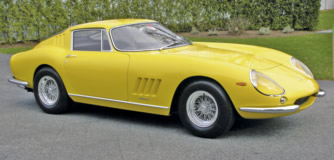|
The 275 GTB berlinetta replaced the 250 GT Lusso at the 1964 Paris Salon, marking two landmarks in Ferrari's road car production history. These were the use for the first time of a combined gearbox and
differential unit in a transaxle assembly, and the provision of independent rear suspension.
The company already had plenty of experience of both systems in their competition cars, the technology of which filtered through to the road models, another case of racing improving the breed.
The 275 GTB was much more
aggressive in appearance than its predecessor, with a larger radiator opening, featuring an egg crate pattern aluminium grille, angled rearward at the lower edge like a hungry mouth, bounded by quarter bumpers, with above them
deeply recessed headlights under Plexiglass covers. The body featured powerful curves with overall lines that had echoes of the 250 GTO, with a long forward section and a set back cabin falling sharply into the short Kamm tail,
carrying circular combination tail/turn light units on a lightly recessed panel similar to that of its predecessor. The body was designed by Pininfarina, and constructed by Scaglietti, normally in steel with aluminium doors,
bonnet, and boot lid, although some examples received full aluminium bodies. The cabin was a three window design with a large deeply curved windscreen and an almost flat rear screen bounded by sail panels that featured triple
cabin exhaust air slots that matched the quadruple arrangement on the front wings. A year after its introduction the model underwent a facelift, which was again shown for the first time at the Paris Salon. The most noticeable
revision was the provision of a new longer slimmer nose, with a flat bonnet replacing the lightly raised centre section unit on the "short nose" car. At the same time the size of the rear screen was increased, and the
boot lid hinges became external to increase the capacity within. The models are generally referred to today as "short nose" or "long nose" two cam models.
The bodies were mounted on a 2400mm wheelbase
chassis that had factory reference numbers 563, and then 563/66, all were numbered in the odd chassis number road car sequence. The construction was along the same basic lines as that of the previous models, but with a tapering
rear main tube section, due to the revised transmission and rear suspension assembly. The model was available in right or left hand drive form. The standard wheels were alloy of two different patterns, a "starburst"
design on early cars, and a simple elegant ten hole design on later "long nose" cars, with the option of Borrani wire wheels throughout the production period.
The engine was an increased capacity derivation of
the single overhead camshaft per bank V12 Colombo designed "short" block unit, with factory type reference 213, of 3286cc capacity, with a bore and stroke of 77mm x 58.8mm. It was fitted with a bank of either three
twin choke Weber 40 DCZ/6 or 40 DFI/1 carburettors, or the optional six Weber 40 DCN3 assembly, with a twin coil and rear of engine mounted distributors ignition system, to produce a claimed 280bhp. The engine drove through a
shaft running at engine speed to a five speed transaxle which was independently supported from the chassis frame, and then by drive shafts to the independently suspended rear wheels, with wishbones, coil spring and hydraulic
shock absorbers to each wheel. Initially the engine had four mounting points and the transaxle three, with sliding joints on the drive shaft between them. However, this proved difficult to maintain in alignment, and after
trials, the final derivation was to adopt twin engine and transaxle mounting points with the drive shaft running within a solid tube connecting the two, making the engine and transaxle a rigid unit.
Apart from the
standard road cars a small series of client competition examples were built, along with a trio of special bodied competition berlinettas. The first series of ten "competition" examples were of the "short
nose" variety, an aluminium body, and six carburettors. However, they received carefully built and balanced engines to racing standards, a larger fuel tank, and frequently an external fuel filler. The second series was of
twelve cars, all with a "long nose" aluminium body, triple carburettors, fitted with curved intake trumpets unique to these cars, lightweight magnesium alloy engine and transmission casing parts, together with
modified engine reciprocating parts, and the provision of dry sump lubrication. Production ran from 1964 through to 1966, in the chassis number range 06021 to 09085, including the competition derivatives.
Engine
- Type : front, longitudinal 60° V12
- Bore/stroke : 77 x 58.8 mm
- Unitary displacement : 273.81 cc
- Total displacement : 3285.72 cc
- Compression ratio : 9.2 : 1
- Maximum power : 206 kW (280 hp) at 7600 rpm
- Power per litre : 85 hp/l
- Valve actuation : single overhead camshaft per bank, two valves per cylinder
- Fuel feed : three or six 40 Weber DCN/3 carburettors
- Ignition : single spark plug per cylinder, two coils
- Lubrication : wet sump
- Clutch : single-plate
Chassis
- Frame : tubular steel
- Suspension
: Front suspension - independent, unequal-length wishbones, coil springs over telescopic shock absorbers, anti-roll bar. Rear suspension - independent, unequal-length wishbones, coil springs over telescopic shock absorbers, anti-roll bar
- Brakes : discs
- Transmission : 5-speed + reverse
- Steering : worm and roller
- Fuel tank : capacity 94 litres
- Front tyres : 195 or 205 x 14
- Rear tyres : 195 or 205 x 14
Bodywork
- Type : two-seater berlinetta
- Length : 4325 mm
- Width : 1725 mm
- Height : 1245 mm
- Wheelbase : 2400 mm
- Front track : 1377 mm
- Rear track : 1393 mm
- Weight : 1100 kg (dry)
Performance

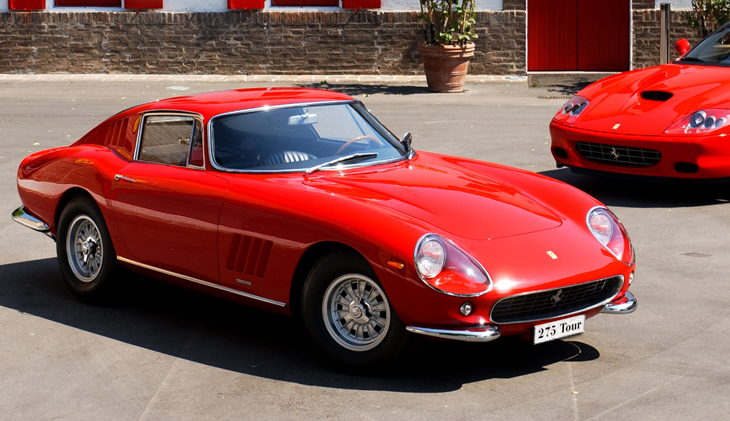
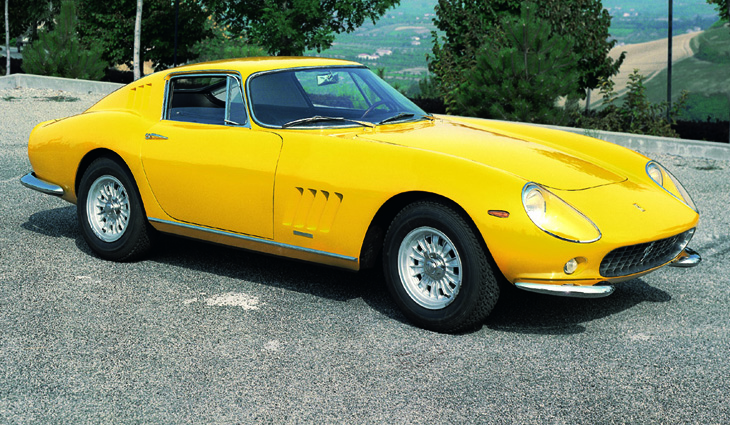
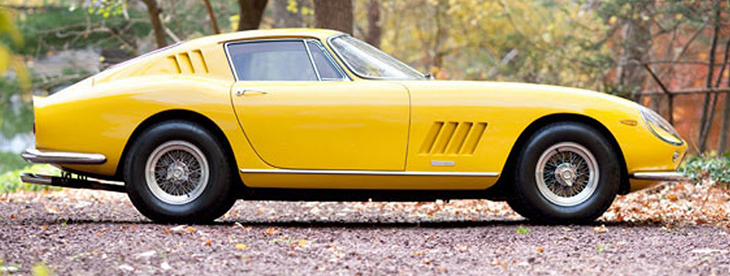
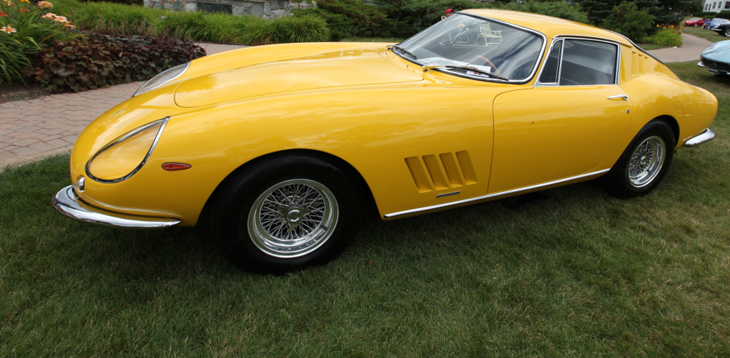
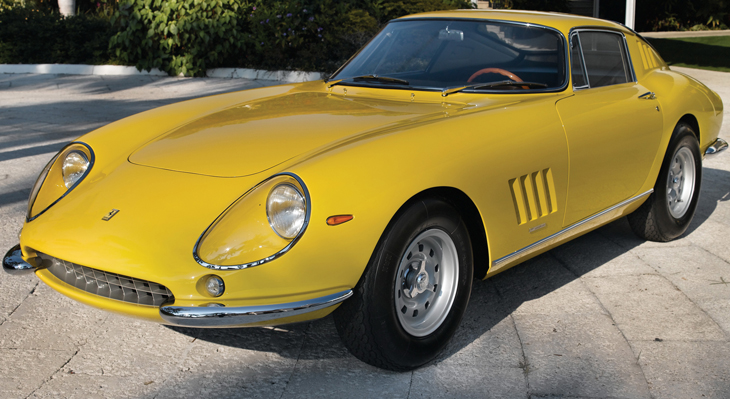
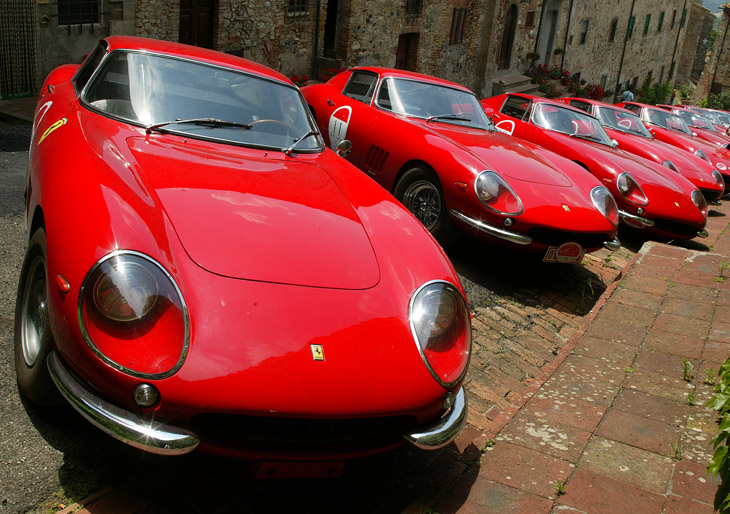
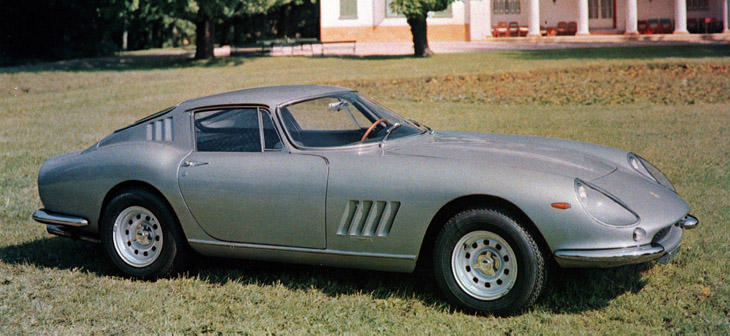
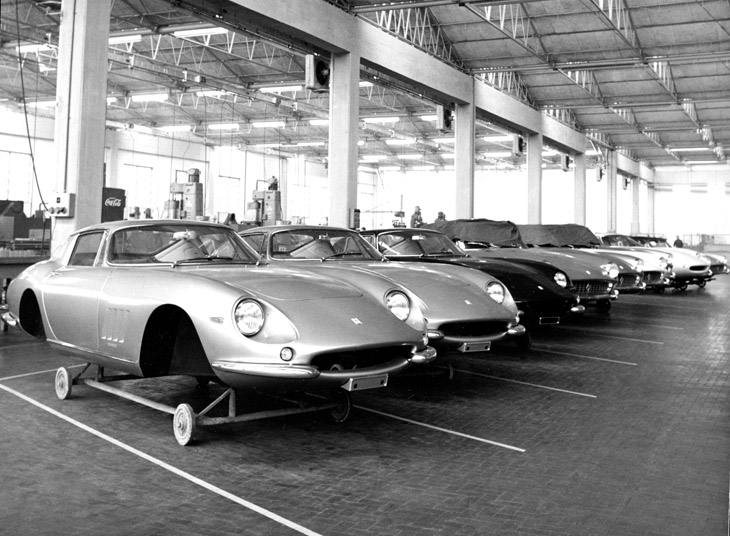
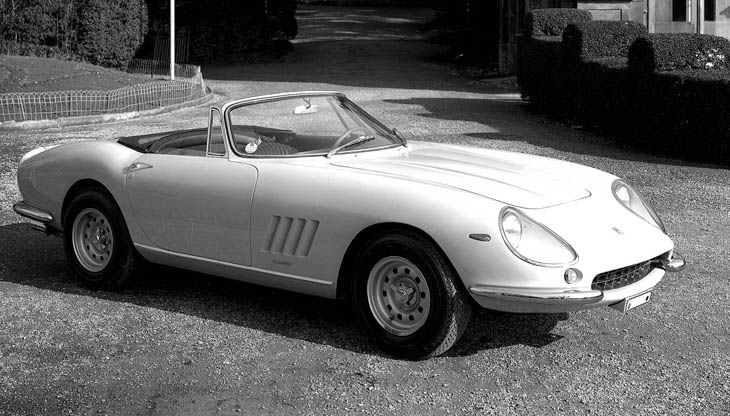
|
